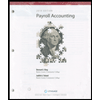
Concept explainers
Recording
Diana Mark is the president of ServicePro, Inc., a company that provides temporary employees for not-for-profit companies. ServicePro has been operating for five years; its revenues are increasing with each passing year. You have been hired to help Diana in analyzing the following transactions for the first two weeks of April:
| April 2 | Purchased office supplies for $500 on account. |
| April 5 | Billed the local United Way office $3,000 for temporary services provided. |
| April 8 | Paid $250 for supplies purchased and recorded on account last period. |
| April 8 | Placed an advertisement in the local paper for $400 cash. |
| April 9 | Purchased new equipment for the office costing $2,300 cash. |
| April 10 | Paid employee wages of $1,200, which were incurred in April. |
| April 11 | Received $1,000 on account from the local United Way office billed on April 5. |
| April 12 | Purchased land as the site of a future office for $10,000. The land value was appraised as $11,000. Paid $2,000 down and signed a long-term note payable for the balance. |
| April 13 | Issued 2,000 additional shares of common stock for $40 per share in anticipation of building a new office. |
| April 14 | Billed Family & Children’s Services $2,000 for services rendered this month. |
| April 15 | Received the April utilities bill for $300 to be paid next month. |
Required:
For each of the transactions, prepare journal entries. Be sure to categorize each account as an asset (A), liability (L), stockholders’ equity (SE), revenue (R), or expense (E).
To prepare: The journal entries for each transaction.
Explanation of Solution
Journal:
Journal is the book of original entry. Journal consists of the day today financial transactions in a chronological order. The journal has two aspects; they are debit aspect and the credit aspect.
Accounting Equation:
The accounting equation implies the relationship between the assets, liabilities, and the stockholders equity. The balance of both the assets and the liabilities, stockholders equity must be equally balanced. The accounting equation is as follows;
Journalize the supplies purchased on account:
| Date | Account Title and Explanation | Debit ($) | Credit ($) |
| April, 2 | Supplies (A+) | 500 | |
| Accounts payable (L+) | 500 | ||
| (To record the purchase of supplies on account ) |
Table (1)
- A supply is an asset account. Thus, an increase in supplies account increases the asset account. Hence, supplies account is being debited to increase its balance by $500.
- Accounts payable is a liability account. Thus, an increase in accounts payable increases the liability account. Hence, account payable account is being credited to increase its balance by $500.
Journalize the service provided on account:
| Date | Account Title and Explanation | Debit ($) | Credit ($) |
| April, 5 | Accounts receivable (A+) | 3,000 | |
| Service revenue (R+, SE+) | 3,000 | ||
| (To record the service performed on account) |
Table (2)
- Accounts receivable is an asset account. Thus, an increase in accounts receivable increases the asset account. Hence, debit accounts receivable account by $3,000
- Service revenue is a stockholder’s equity account. Thus, an increase in service revenue increases the stockholder’s equity account. Hence, service revenue account is being credited to increase its balance by $3,000.
Journalize the payment made for the purchase of supplies on account.
| Date | Account Title and Explanation | Debit ($) | Credit ($) |
| April, 8 | Accounts payable (L-) | 250 | |
| Cash (A-) | 250 | ||
| (To record the payment made for the supplies purchased on account ) |
Table (3)
- Accounts payable is a liability account. Thus, a decrease in accounts payable decreases the liability account. Hence, account payable account is being debited to decrease its balance by $250.
- Cash is an asset account. Thus, a decrease in cash account decreases the asset account. Hence, cash account is being credited to decrease its balance by $250.
Journalize the advertisement expenses incurred:
| Date | Account Title and Explanation | Debit ($) | Credit ($) |
| April, 8 | Advertisement expenses (E+, SE-) | 400 | |
| Cash (A-) | 400 | ||
| (To record the advertisement expenses ) |
Table (4)
- Advertisement expense is an expense account which comes under Retained earnings in stockholder’s equity. Thus, an increase in advertisement expense account decreases the stockholder’s equity account. Hence, advertisement expenses account is being debited to increase its balance by $400.
- Cash is an asset account. Thus, a decrease in cash account decreases the asset account. Hence, cash account is being credited to decrease its balance by $400.
Journalize the purchase of equipment:
| Date | Account Title and Explanation | Debit ($) | Credit ($) |
| April, 9 | Equipment (A+) | 2,300 | |
| Cash (A-) | 2,300 | ||
| (To record the purchase of equipment ) |
Table (5)
- Equipment is an asset account. Thus, an increase in equipment increases the asset account. Hence, debit equipment account by $2,300.
- Cash is an asset account. Thus, a decrease in cash account decreases the asset account. Hence, cash account is being credited to decrease its balance by $2,300.
Journalize the wages expense incurred for the current month.
| Date | Account Title and Explanation | Debit ($) | Credit ($) |
| April, 10 | Salaries and Wages expenses (E+, SE–) | 1,200 | |
| Cash (A–) | 1,200 | ||
| (To record the payment of wages) |
Table (6)
- Salaries and Wages expense is a component of stockholder equity account. Thus, an increase in Salaries and Wages expenses decreases the stockholders equity account. Hence, Salaries and Wages expenses account is being debited to increase its balance by $1,200.
- Cash is an asset account. Thus, a decrease in cash decreases the asset account. Hence, credit cash account by $1,200.
Journalize the cash received for the service rendered on account:
| Date | Account Title and Explanation | Debit ($) | Credit ($) |
| April, 11 | Cash (A+) | 1,000 | |
| Accounts receivable (A–) | 1,000 | ||
| (To record the cash received for the service performed on account) |
Table (7)
- Cash is an asset account. Thus, an increase in cash increases the asset account. Hence, debit cash account by $1,000.
- Accounts receivable is an asset account. Thus, a decrease in accounts receivable decreases the asset account. Hence, debit accounts receivable account by $1,000.
Journalize the land purchased partly for cash and partly by signing a note.
| Date | Account Title and Explanation | Debit ($) | Credit ($) |
| April, 12 | Land (A+) | 10,000 | |
| Cash (A–) | 2,000 | ||
| Notes payable (L+) | 8,000 | ||
| (To record the land purchased partly for cash and partly by signing a note) |
Table (8)
- Land is an asset account. Thus, an increase in land increases the asset account. Hence, debit land account by $10,000.
- Notes payable is a liability account. Thus, an increase in notes payable increases the liability account. Hence, notes payable account is being credited to increase its balance by $8,000.
- Cash is an asset account. Thus, a decrease in cash decreases the asset account. Hence, credit cash account by $2,000.
Journalize the issuance of common stock:
| Date | Account Title and Explanation | Debit ($) | Credit ($) |
| April, 13 | Cash (A+) | 80,000 | |
| Common stock (SE+) | 80,000 | ||
| (To record the issuance of common stock to investors) |
Table (9)
- Cash is an asset account. Thus, an increase in cash increases the asset account. Hence, debit cash account by $80,000.
- Common stock is a component of stockholder equity account. Thus, an increase in common stock increases the stockholders equity account. Hence, common stock account is being credited to increase its balance by $80,000.
Journalize the service rendered on account:
| Date | Account Title and Explanation | Debit ($) | Credit ($) |
| April, 14 | Accounts receivable (A+) | 2,000 | |
| Service revenue (R+, SE+) | 2,000 | ||
| (To record the service performedon account) |
Table (10)
- Accounts receivable is an asset account. Thus, an increase in accounts receivable increases the asset account. Hence, debit accounts receivable account by $2,000
- Service revenue is a stockholder’s equity account. Thus, an increase in service revenue increases the stockholder’s equity account. Hence, service revenue account is being credited to increase its balance by $2,000.
Journalize the utilities expenses incurred which are to be paid later:
| Date | Account Title and Explanation | Debit ($) | Credit ($) |
| April, 15 | Utilities expenses (E+, SE-) | 300 | |
| Accounts payable (L+) | 300 | ||
| (To record the utilities expenses that are to be paid later) |
Table (11)
- Utilities expense is an expense account which comes under Retained earnings in stockholder’s equity. Thus, an increase in utilities expense account decreases the stockholder’s equity account. Hence, utilities expenses account is being debited to increase its balance by $300.
- Accounts payable is a liability account. Thus, an increase in accounts payable increases the liability account. Hence, account payable account is being credited to increase its balance by $300.
Want to see more full solutions like this?
Chapter 3 Solutions
Fundamentals of Financial Accounting
- Please explain the correct approach for solving this general accounting question.arrow_forwardI am trying to find the accurate solution to this general accounting problem with the correct explanation.arrow_forwardPlease provide the accurate answer to this general accounting problem using valid techniques.arrow_forward
 College Accounting (Book Only): A Career ApproachAccountingISBN:9781337280570Author:Scott, Cathy J.Publisher:South-Western College Pub
College Accounting (Book Only): A Career ApproachAccountingISBN:9781337280570Author:Scott, Cathy J.Publisher:South-Western College Pub College Accounting (Book Only): A Career ApproachAccountingISBN:9781305084087Author:Cathy J. ScottPublisher:Cengage LearningPrinciples of Accounting Volume 1AccountingISBN:9781947172685Author:OpenStaxPublisher:OpenStax College
College Accounting (Book Only): A Career ApproachAccountingISBN:9781305084087Author:Cathy J. ScottPublisher:Cengage LearningPrinciples of Accounting Volume 1AccountingISBN:9781947172685Author:OpenStaxPublisher:OpenStax College
 Excel Applications for Accounting PrinciplesAccountingISBN:9781111581565Author:Gaylord N. SmithPublisher:Cengage Learning
Excel Applications for Accounting PrinciplesAccountingISBN:9781111581565Author:Gaylord N. SmithPublisher:Cengage Learning Intermediate Accounting: Reporting And AnalysisAccountingISBN:9781337788281Author:James M. Wahlen, Jefferson P. Jones, Donald PagachPublisher:Cengage Learning
Intermediate Accounting: Reporting And AnalysisAccountingISBN:9781337788281Author:James M. Wahlen, Jefferson P. Jones, Donald PagachPublisher:Cengage Learning





